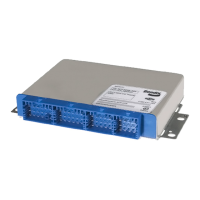
Do you have a question about the BENDIX EC-60 ABS and is the answer not in the manual?
| Type | ABS Controller |
|---|---|
| Function | Anti-lock Braking System control |
| Model | EC-60 |
| Manufacturer | Bendix |
| Operating Temperature | -40°C to +85°C |
| Compatibility | Heavy-duty Vehicles |
Instructions to prevent personal injury or death during operation.
Cautions regarding the use and limitations of the ESP stability system.
Counteracts trailer push and loss-of-control incidents.
Reports steering wheel position to the controller.
Indicate vehicle lateral acceleration and rotation.
How the ABS system controls wheel braking.
Uses wheel speed and modulator control for traction enhancement.
ESP reduces risk of rollovers, jackknifing, and loss-of-control events.
Addresses rollover conditions by applying brakes and reducing speed.
Counteracts tendency of vehicle to spin about its vertical axis.
Reduces throttle and applies brakes to prevent slide and jackknife.
ESP can automatically decelerate the vehicle.
ESP effectiveness may be reduced when towing multiple trailers.
Factors that can reduce ESP system effectiveness.
Recommendations for maximizing ESP system effectiveness.
Procedure and importance of recalibrating the steering angle sensor.
How the ECU calibrates tire sizes for optimal performance.
Essential safety instructions to prevent injury or death.
Procedure for calibrating the steering angle sensor.
Procedure for calibrating the Yaw Rate sensor.
Conditions and procedure for calibrating brake demand sensors.
ECU's self-testing diagnostic circuitry and trouble code communication.
How the ECU handles and indicates active trouble codes.
Using blink codes to troubleshoot ABS problems.
Retrieving active diagnostic trouble codes via blink codes.
Reviewing stored inactive trouble codes and event history.
Procedures for clearing active diagnostic trouble codes.
How to reconfigure the ECU using specific modes.
Using the RDU tool for ABS diagnostics and DTC reporting.
Interpreting diagnostic trouble codes displayed by LEDs.
How to reset the RDU tool and clear codes.
Using ACom software for diagnostics and calibration.
Tests to perform for power supply issues.
Using ACom software for ECU DTC interpretation.
Tests for troubleshooting TCV trouble codes.
Tests and calibration procedures for the Steering Angle Sensor.
Tests and calibration procedures for the Yaw Rate Sensor.
Tests for Brake Demand/Load Sensors.
ECU wiring harness connector requirements and seating.
Best practices for ABS wiring, including wire size and twisting.
Troubleshooting steps for advanced in-cab ECU faults.
J1587/FMI codes for wheel speed sensor DTCs.
J1587/FMI codes for PMV DTCs.
J1587/FMI codes for miscellaneous DTCs.
